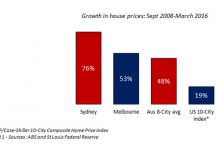Global investment in commodity-based exchange-traded products, structured notes and index swaps totalled approximately USD100 billion in 2006. Six years later, this number had risen to a record high of USD415bn. This is largely explained by the fact that commodities are now standard components of strategic asset allocation as they generate equity-like returns in the long run, act as risk-diversifiers, and serve as an inflation-hedge.
However, given the practical, regulatory and ethical difficulties of investing in physical commodities, the challenge of choosing from a bewildering multitude of index products, and the recurring bull and bear markets in commodities, “the decision to invest in a diversified commodity hedge fund manager seems almost a no-brainer” (Source: Barclays Capital – Hedge Fund Pulse, September 2011).
Until, that is, you consider the challenge of finding a well-diversified, discretionary commodity hedge fund manager with a good track record that is open to new capital. Very few commodity hedge funds are generalists; most choose instead to focus narrowly on a single commodity type such as agriculture, energy or metals. This is because many commodity specialists, who started out as prop traders at commodities houses, have considerable expertise in fundamental analysis and market information flow (i.e. who was moving which commodities in what volumes and in what locations) of specific commodities. These managers typically make sizeable bets focused on one area or on a single factor.
This latter approach did well in the years leading up to the financial crisis of 2008 but has become less effective as the commodity markets have become increasingly driven by factors other than supply and demand. As central bank interventions and investor sentiment have become the major price determinants, this ‘financialisation’ of commodities post-2008 has led to greater price volatility and intermittently greater correlation with other risk assets. These flow and fundamental-based traders have struggled to capture meaningful returns as they frequently lack the awareness of the macro-economic analysis that is required to manage risk and reward in the current environment.
The Newedge Commodity Trading Index is -2.59% for 2012 as of December and, for some, the changed trading environment has proved decisive. Some highly successful funds, e.g. BlueGold with peak assets of over $2billion, have closed and returned money to their investors. In this environment, where government policy distorts the expression of fundamentals, those flow and fundamental managers who have remained too true to their fundamental supply and demand analysis have been run over either by the wall of liquidity provided by central banks, or by waves of risk aversion triggered by geo-political events.
In reality, this increasing commodity volatility has not occurred in isolation. Commodities have been undergoing a decade-long period of increasing volatility spurred by global, broad-based demand from emerging markets and tightening global inventories. These tightening supply/demand conditions exacerbate commodity volatility, but will probably lead to higher returns over the long term. However, the other way to do it is to use a fund manager who integrates macro-economic factors in its investment process but, as implied earlier, the volatility is a lot higher within the commodity asset class.
| The above data and research was compiled from sources believed to be reliable. However, neither MBMG International Ltd nor its officers can accept any liability for any errors or omissions in the above article nor bear any responsibility for any losses achieved as a result of any actions taken or not taken as a consequence of reading the above article. For more information please contact Graham Macdonald on [email protected] |




